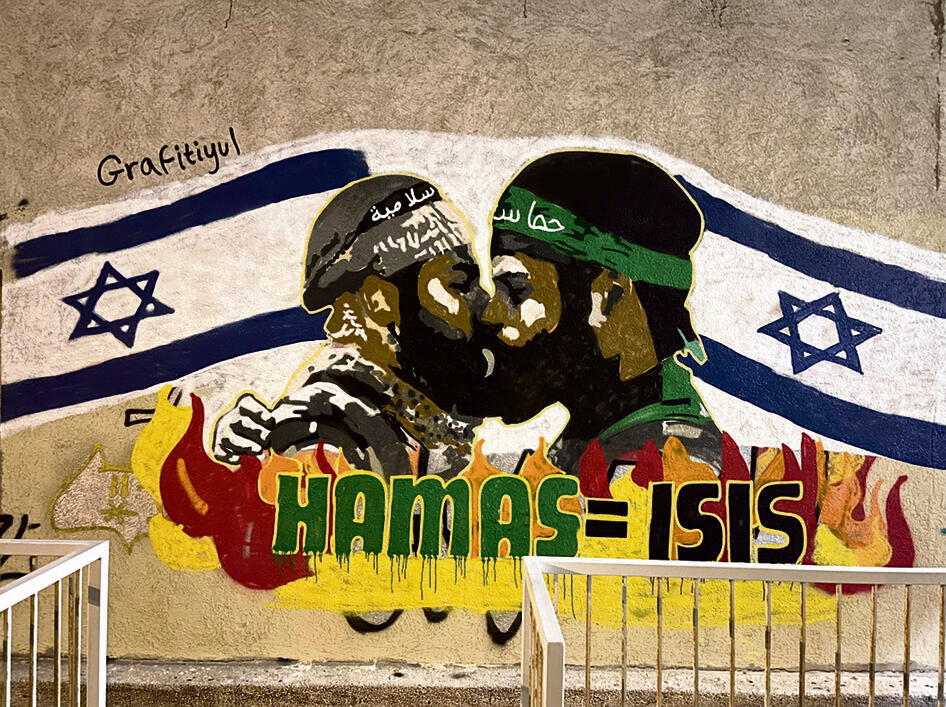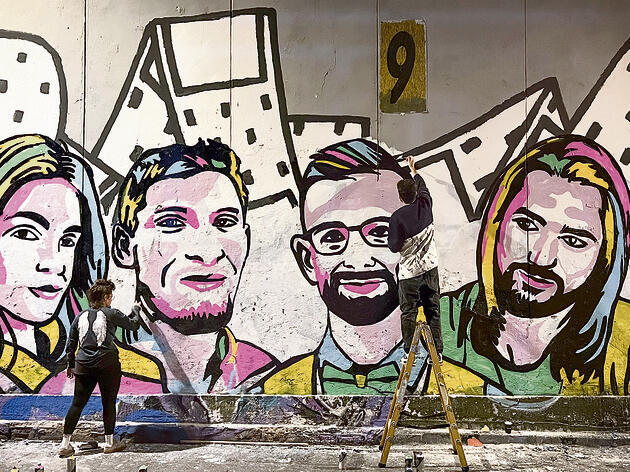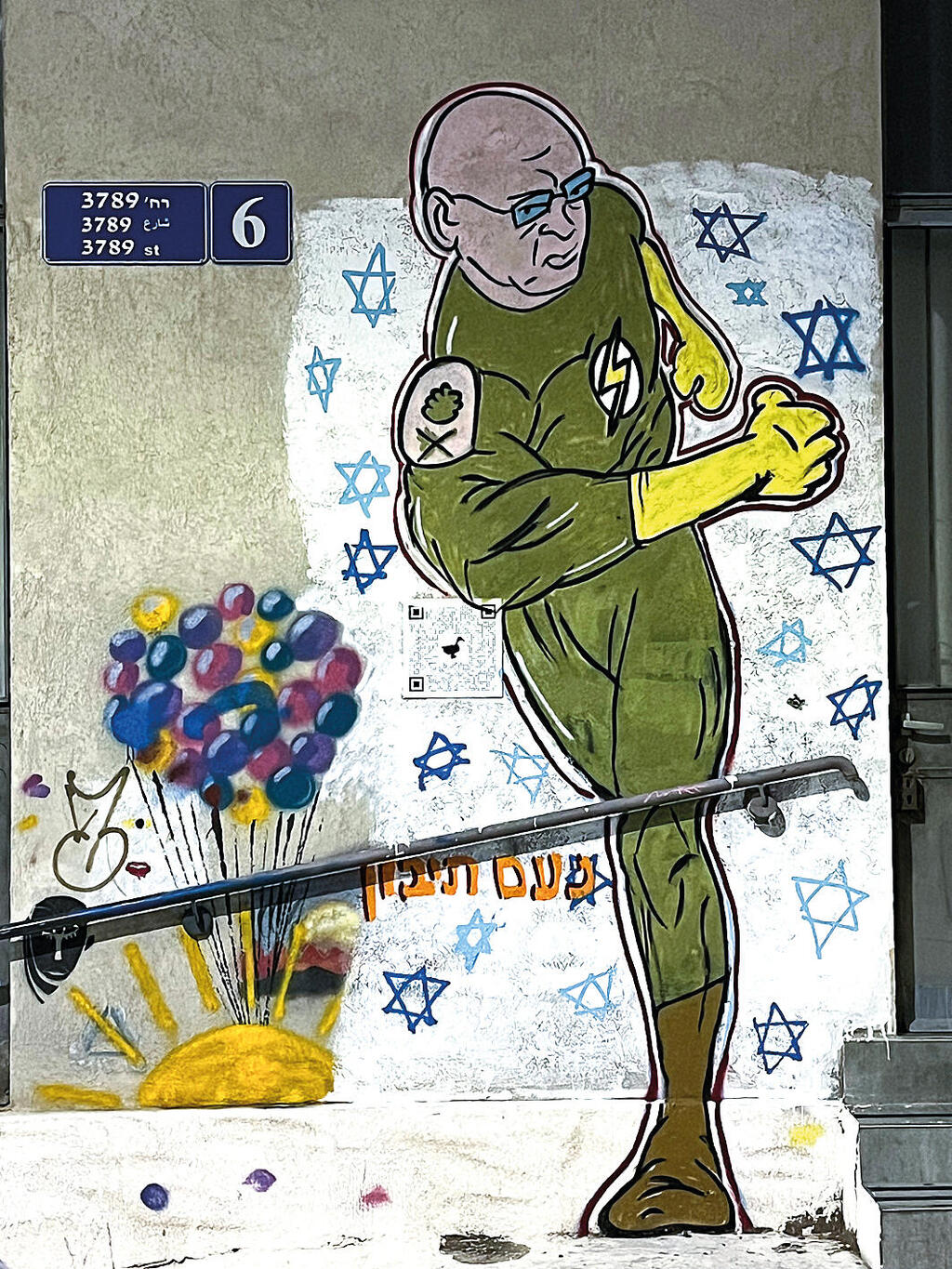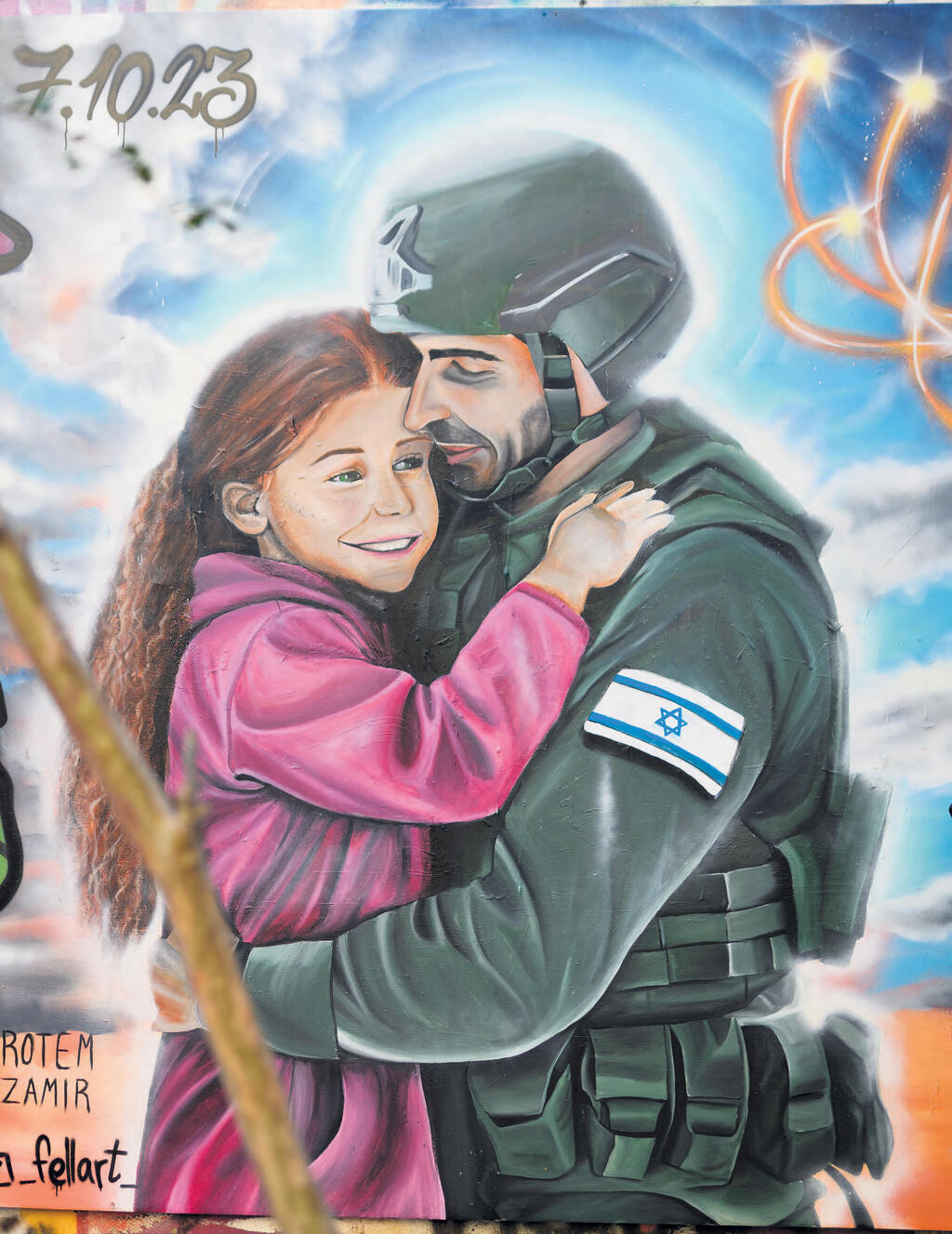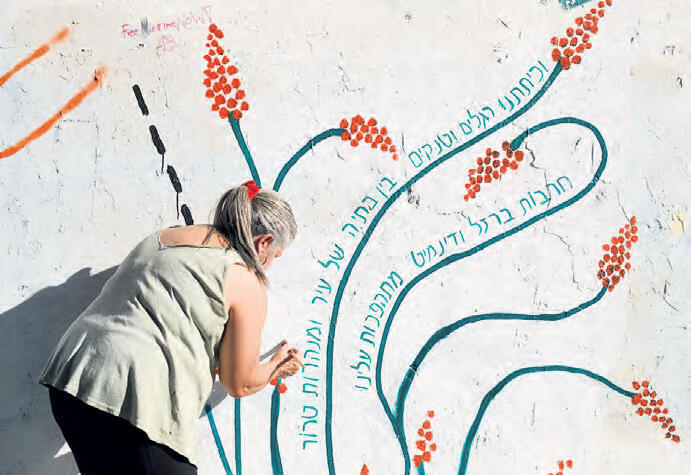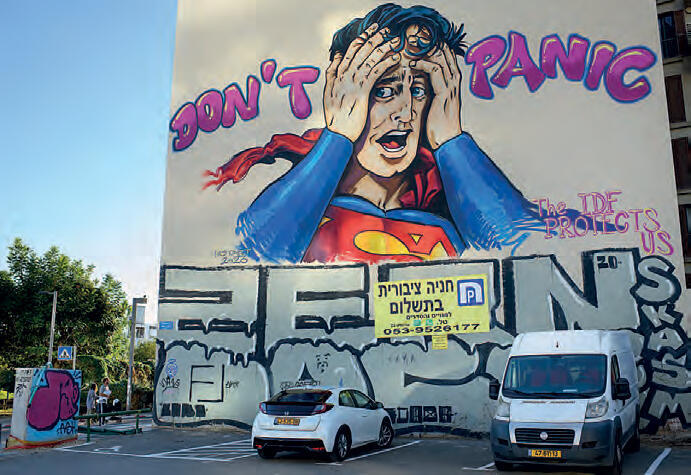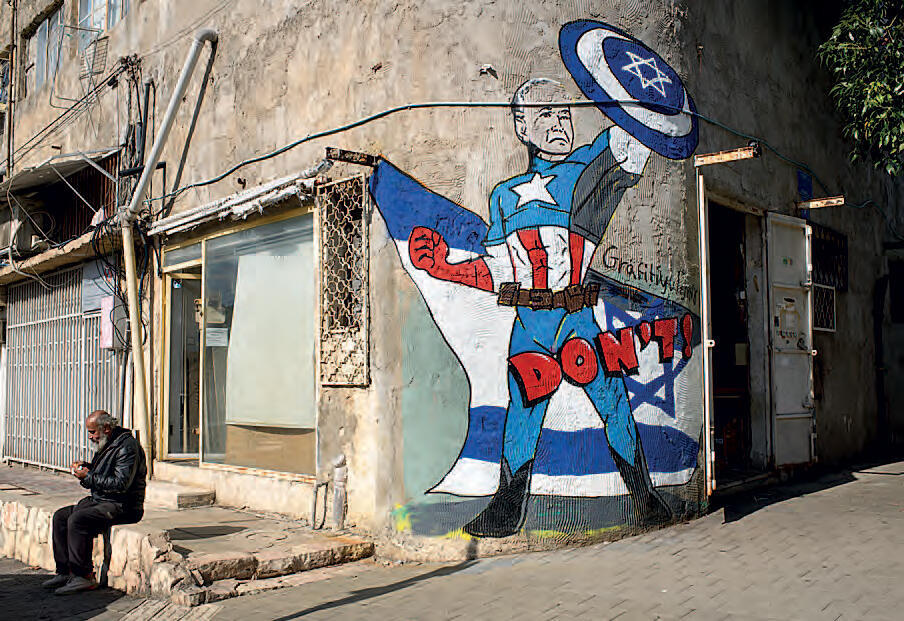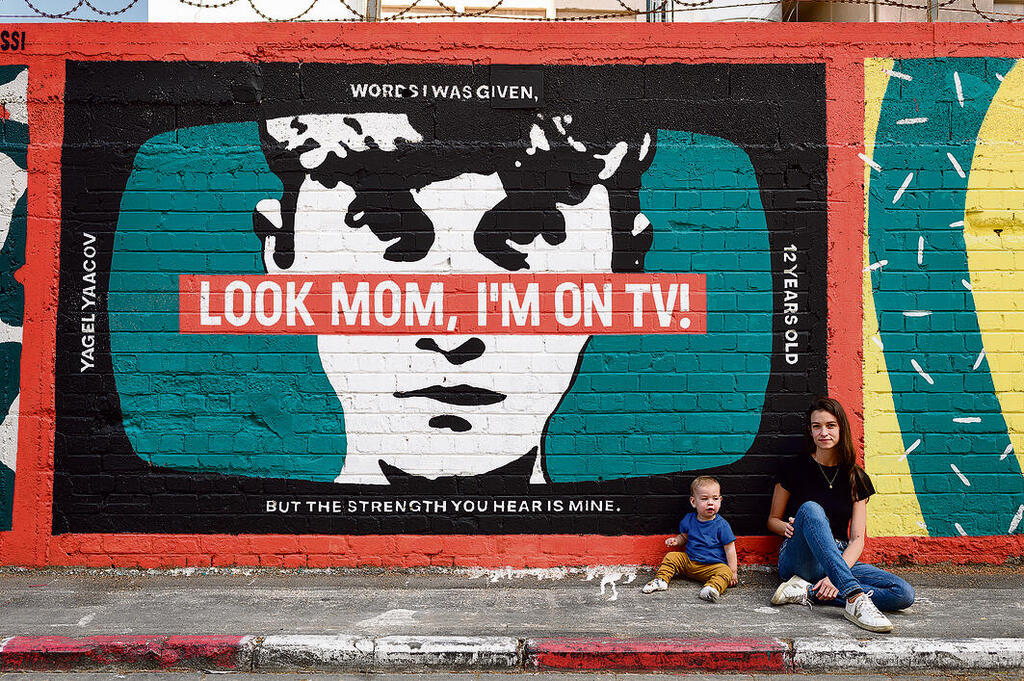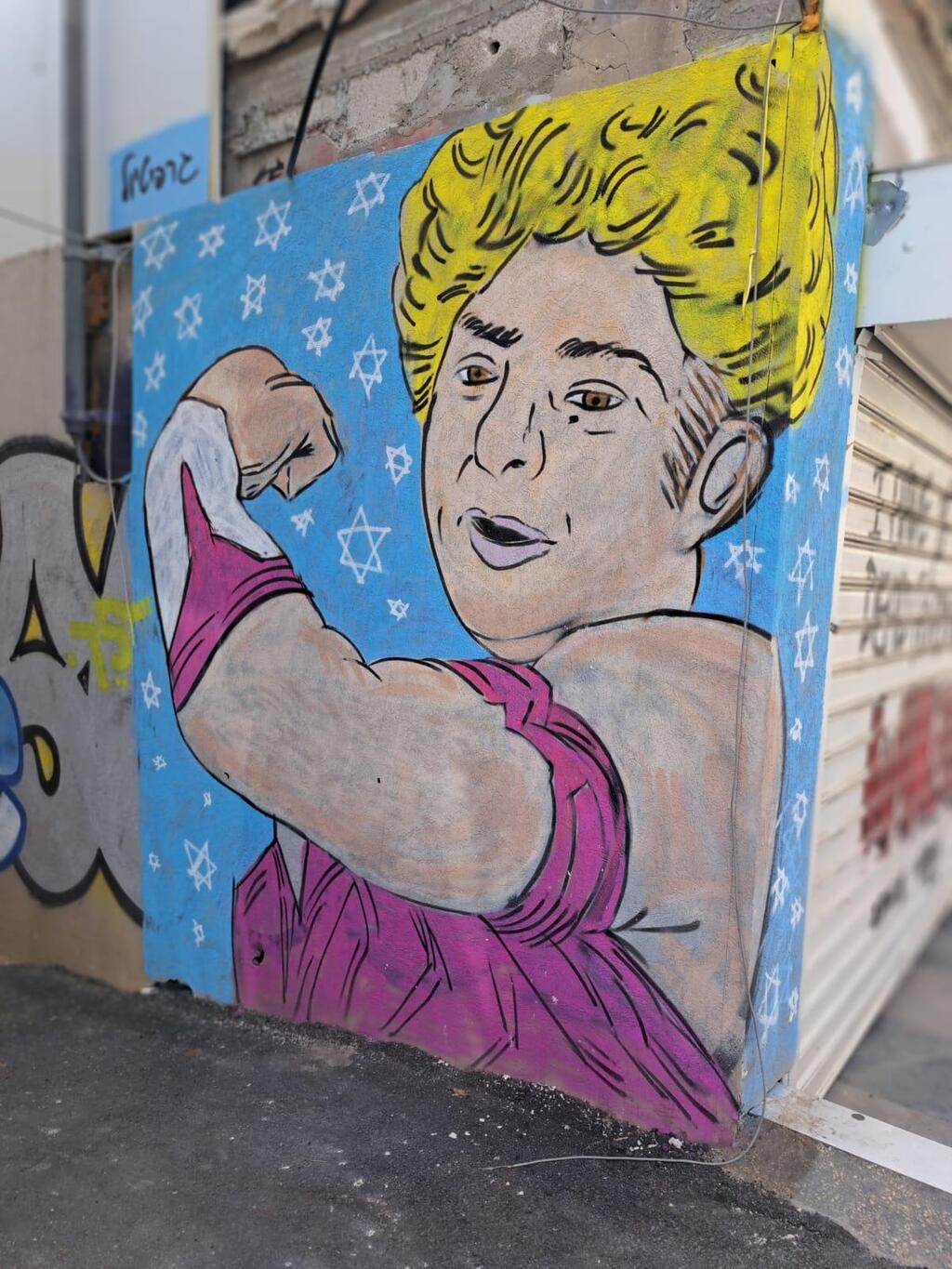For years, graffiti was viewed as vandalism of the public space, and those who took spray cans to walls were often labeled anarchists or simply lawbreakers. However that was no longer the case and since the outset of the war, Tel Aviv proves graffiti is the most relevant form of art.
More stories:
The walls are full of subversive works, humor, protest, and commemorative works, displaying a burst of creativity . Tel Aviv's walls tell the story of pain, loss, and heroism, and even provide a bit of humor in these challenging days.
Michal Pisetsky-David, a graffiti artist who now holds art tours inspired by the war, organized by the Tel Aviv municipality, says she’s awed every time she tours the streets. "Street art responds to the war unlike it it had ever done before in any other crisis, not even during the COVID-19 pandemic. Every art piece here is related to the war," she says. "
There's a kind of catharsis here. People want to go out and breathe fresh air, but on the other hand, there is depression and guilt, and people don’t go out much. When they do, they apologize for being alive," she says.
A tour through the streets of South Tel Aviv tells the story of recent weeks. People stand by the works, some small and intimate, others giant murals like the one created by the Graffitiyul graffiti group featuring four murdered heroes: Amit Mann, a paramedic from Kibbutz Be'eri; Aner Shapira, who threw out seven grenades hurled into a shelter by terrorists, saving many lives; Ben Shimoni, who survived the music festival massacre and returned several times to save people before he was murdered; and Awad Darawshe, an Israeli-Arab ambulance driver who saved wounded during the attack before he was killed. Suddenly, the art feels relevant, not disconnected from the times.
"This is a creation that is current and relevant to what people are experiencing. People talk about the works they see, and there’s something in them that connects to our lives. But it's not just on the street; there’s a feeling like the entire world of art is on fire, and everyone is looking for a way to express themselves. It's the same as everyone looking for a place to volunteer to help those displaced or otherwise effected by the Hamas attack. For artists, this creation is the best way to express themselves," says Pisetsky-David.
One phenomenon seen on the walls of Tel Aviv is graffiti which acts as obituaries. People have connected to the stories of victims and the fallen and felt the need to write their names on the walls to immortalize them.
"In a newspaper, an obituary lasts a day, but on the wall, it can remain for years."
"In a newspaper, an obituary lasts a day, but on the wall, it can remain for years, also because it's hard for me to believe that someone will erase it. One which can’t be described by a name yet, is that of Menuha Hulati, a woman from Kisufim who was with her husband at home. He managed to hide in the protected room and survive, while she burned alive.
Or the graffiti of Roni Eshel, an IDF lookout who was identified only a month after the attack. Street artists connected to the stories, to the immense pain and mourning, and went out to the streets to immortalize their names, and it's amazing."
One prominent phenomenon in the art is the songs people feel the need to write on walls, alluding to the government’s failures before, during and after the attack. Political protest is rife on the walls of Tel Aviv.
Another amazing painting is that of an IDF soldier holding a girl, painted by two artists: Rotem Zamir and Yuval Peler, who are both IDF soldiers. Yuval lives in Dimona and started painting in high school, and was deployed in the military as a graffiti artist. The role itself is interesting, and even the army recognizes it as something that can boost soldiers' morale.
Recently, the IDF has called on graffiti artists to come to military bases to paint and encourage the soldiers. Many works are dedicated to Israeli captives, and the streets are filled with tributes to the children abducted into Gaza. Each artist received the name of one of the abductees and painted a work inspired by them.
One of the most significant works was done by Roman and Andrei, two artists from Ashkelon who created an incredible piece, one of the biggest among works inspired by the war, called Don't Panic.
One of the artists who brought a different perspective on the war is Elinoy Kislev. "When the war started, I felt that I had to do something. I was in shock in the first few days, and I was very angry about the situation. I felt that I had to express it somehow, and for me, the way was graffiti.
“We have a group of artists called Graffitiyul. We create graffiti together, and I wrote in our group chat asking who wanted to come with me. I thought of doing something in protest, spraying our anger and pain. But one of the girls said there was so much anger and blame on social media, and that maybe we should, on the contrary, raise morale and make people happy.”
“We thought about what could bring light in the darkest hour and remembered Rachel Edri from Ofakim. We didn't have much time, and we had a lot of spray cans with us. We found a drawing online by a talented autistic man named Daniel Amit. I contacted him, and he allowed us to use the painting. That's what we did, and the reactions were amazing.
“People came out of their homes, recognized Rachel, and some brought spray cans from their homes and started helping us. Even the police officers stopped, and when they understood what we were doing, they said 'well done.' If you had told me this would happen in the past, I would have said it was impossible.”
“It was posted on social media, and we received a lot of ideas and compliments. We started to realize what power these paintings hold in wartime. We suggested that people paint with us, and families came to join and spread the message."
According to her, many families of fallen soldiers began reaching out to them, wanting to commemorate their children, alongside families of Israeli hostages. However, they prefer to focus on the war’s heroes.
"There are many artists who are dealing with concern for hostages, and we feel an urgent need to boost morale, and that's what we're working for. We want to bring the heroes’ stories." Slowly, a group of artists, mainly women, joined Elinoy’s group. "We’re called Graffitiyul, and we work together, making a living from taking out tours. If someone has an idea for graffiti, she shares it and asks who wants to join, and we go out in groups to create graffiti together."
For the final graffiti they painted last week, the group chose the war’s heroes. "The stories of these heroes are incredible. They’re superhuman. I want people to stop and ask about the story behind them. They were murdered, but they saved people’s lives. Aner who caught grenades and threw them back, Amit the paramedic who saved lives, or Ben and Awad who plunged into the horror to save lives," says Elinoy.



